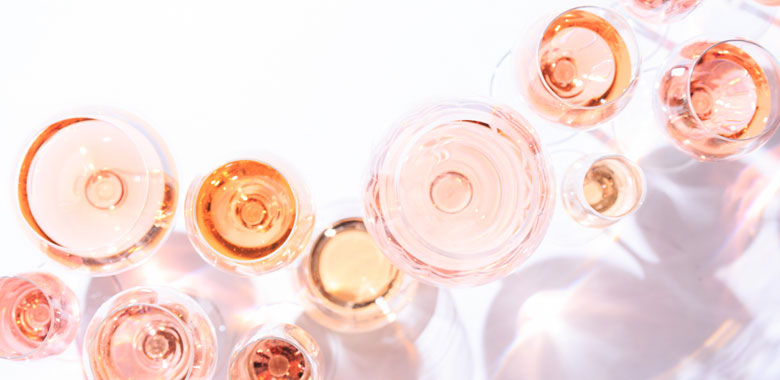
Wine
Rosé: State of Play
Rosé fans rejoice! Australian Rosé wine is now, for the first time in a long time, decidedly dry, savoury, textual and downright delicious. At a recent Rosé State of Play wine tasting, held at Selector HQ, a proficient panel of discerning wine professionals were assembled to taste, evaluate, gauge and appraise some 35 pink-tinctured wines from over 15 Australian wine regions spread throughout four prominent winegrowing states. The findings were surprising, the conclusions were consistent, and the consequences for Rosé wine fans were definitively delicious. More on that later.
a Rosé evolution
First, let’s briefly explore the evolution of Rosé wine over time; its rise and fall and rise again.
Made exclusively from red grapes, Rosé has never been a faddish flash in the pan. Rather, it’s been riding the wave of permissiveness and prejudice since the Middle Ages. Before the beginning of the French Revolution, lighter coloured Rosés were the French aristocracy’s wine drink of choice. For centuries prior, pink wines were regarded as the higher quality wine. At one point in history, a French physician recommended the hearty, earthy, blood-thickening red wines for France’s robust peasants, while the delicate, fragile, lighter coloured wines were better suited to the fine character and delicate constitutions of the French aristocrats. Brad and Angelina’s Miraval Côte de Provence Rosé notwithstanding, how times have changed.
Australian Rosé wine styles have a characteristically sweet past. Fledgling instances often took their cues from wines like the globally popular Mateus Rosé from Portugal. Mateus tends to fall towards the off-dry and sweet side of the equation; hot pink in colour, strawberry and raspberry candy scented, sweet and sticky with a slightly fizzy mouthfeel. Ever since Mateus, there has been plenty of emulation by Aussie Rosé wines, which feature more than a few grams of residual sugar to sweeten the deal for any rookie Rosé drinking recruit. Of course, off-dry versions of this pink wine style certainly have their place on the bottle-shop shelf. These days, however – if the results of the State of Play tasting are any indication – the essential character of Australian Rosé has shifted from sweet to savoury. Local winemakers, it appears, are pursuing a much drier and more textual style.
“I am a huge fan of Provence Rosés, which are bone dry and complex, yet, at the same time, still such fun to drink,” says Christina Tulloch, of Tulloch Wines in the Hunter Valley.
Tulloch’s 2019 Cellar Door Release Rosé – made from the Tuscan red grape, Sangiovese – was a favourite at the tasting thanks to its precise balance between fresh yet savoury, sweet fruit flavour, crisp texture, and fine and dry length on the palate.
“Sangiovese is an early ripening variety we find makes a beautiful Rosé wine in that dry, elegant Provence style, which I love,” continues Christina. “Our Rosé has got such a pretty flavour profile that makes it seriously fun and immediately drinkable.”
Indeed, the Tasting Panel seemed to admire these particular qualities in many of the Rosé wines they sampled.
“Most of the wines we tasted were dry and savoury in style, but the ones that stood out had a deep, sweet fruit core, and an incredible persistence and length, which I think is what makes a good Rosé,” Panellist Dave Mavor remarked. “Sangiovese works really well when it’s made to a dry Rosé style. The Tulloch has that lovely balance between freshness and flavour, texture and length,” he added.
dominant characters
While blends and a few alternative varietals performed really well, it was the energetic aromatics of fruit and spice and captivating interplay between the brilliant acids and crunchy tannins from the Italian stallions, Sangiovese and Nebbiolo, that captured the mouths and minds of the Tasting Panel. Moreover, it seemed varietal character, rather than regional provenance, tended to define the stylistic characteristics of many of the Rosé wines featured. While each wine surely conveyed its own regional nuance, in a blind line-up, these subtleties were often more noticeably dominated by varietal expression.
“For me, varietal character shines through much more than regional character,” Panellist Adam Walls commented. “The Pinot Noirs have great fragrance with that silky, smooth mouthfeel; quite similar to the Grenache Rosés, although, both varieties had distinctively different fruit profiles.”
Five of the top ten Rosés tasted were made from Pinot fruit. Many of these wines presented a gorgeous array of fresh strawberries and cream, raspberry, rose petals, and ripe watermelon aromas and flavours, balanced by supple and sappy mouthfeels driven by bracing acids to a dry, moreish finish.
“Pinot has such a lovely delicacy and presence of sweet berry fruit notes, and the colour is always light, making it perfect for Rosé,” Burch Family Wines winemaker, Janice McDonald explains.
Gunning for grenache
Meanwhile, four single varietal Grenache Rosés were featured in the top 20 wines, along with a further four blends that featured Grenache.
The Yangarra Grenache Rosé 2018 was one of the standout wines of the tasting and Yangarra winemaker, Peter Fraser explains why the variety is so perfect for the style.
“When picked early, Grenache has a lovely, bright acidity that makes a delicate and refreshing style of Rosé that’s fragrant with roses and strawberries, and the crunchiness of a pink lady apple.”
In terms of blends, Chaffy Bros. winemaker, Daniel Chaffey-Hartwig adores the fresh aromatics and bright fruit flavours that Grenache brings to bear whenever its blended with Mourvèdre, Rosé style.
“Grenache gives these pretty, lifted aromatics of rosewater and delicate florals, and a palate of strawberries and cream that’s interwoven with the spice and structure provided by the Mourvèdre,” says Daniel. “These newer savoury styles of Rosé are perfectly suited to our Aussie lifestyle and climate.”
Evidently, characteristic aristocratic preferences are back, as this State of Play demonstrated the shift from sweet to savoury styles of Rosé is well underway amongst Australian winemakers and wine lovers alike.
Rejoice!
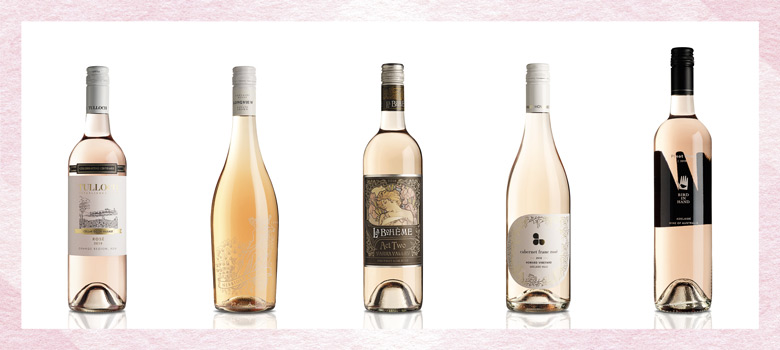
Tulloch Cellar Door Release Rosé 2019
Orange, RRP $22
The Hunter Valley’s Tulloch have used fruit from the Orange region for this French Provencal style made from Sangiovese. Very pale and vibrant pink in colour, it has a bright and floral nose with subtle touches of red berry and musk. Light and dry, crisp and crunchy, it features a savoury mix of cranberry, redcurrant and red cherry, fresh citrussy acidity and a dry yet soft finish.
Longview Nebbiolo Rosato 2018
Adelaide Hills, RRP $26
Nebbiolo-based Rosés proved a Tasting Panel favourite and this Longview beauty shows why. Bright pale orange to onion skin in the glass, it shows subtle savoury aromas of citrus peel, white tea and kitchen spice. It has terrific savoury appeal with bright red berry fruit entry and core depth, an attractive umami layer throughout giving texture and mouthfeel, mouth-watering acidity and a moreish finish. Light and dry yet generously flavoured. Lovely!
La Bohème Act Two Dry Pinot Noir Rosé 2018
Yarra Valley, RRP $28
De Bortoli describes this as a “classic bistro wine” perfect for enjoying over a few plates of tapas, and we’d have to agree. It’s a bright pale salmon colour with an expressive nose of rose petal, red apple and mandarin zest. Light and crisp with notes of white cherry, orange peel, red delicious and raspberry, it’s delicate yet full of flavour and generosity with creamy texture and excellent length. Overall – delicious!
Howard Vineyard Cabernet Franc Rosé 2018
Adelaide Hills, RRP $35
Both the 2018 and 2017 vintages of this Rosé won the Trophy for best Rosé in show at the Adelaide Hills Wine Show. Its beauty begins with its very pale salmon colour, followed by savoury cherry and golden delicious apple lift on the nose. Crisp, dry and fresh with crunchy cherry and raspberry fruit, hints of fresh herb and white pepper and savoury acid drive.
Bird in Hand Pinot Rosé 2019
Adelaide Hills, RRP $20
Bird in Hand winemaker Kym Milne became Australia’s second ever Master of Wine in 1991. And he’s brought his masterful touch to this Pinot Noir Rosé. It’s bright pale pink with aromas of white cherry, strawberry and pomegranate with background white pepper, dried herb and floral notes. The palate is light, dry and savoury with a very fine and savoury mix of red berry fruit characters, fine acidity and a light, almost ethereal finish.
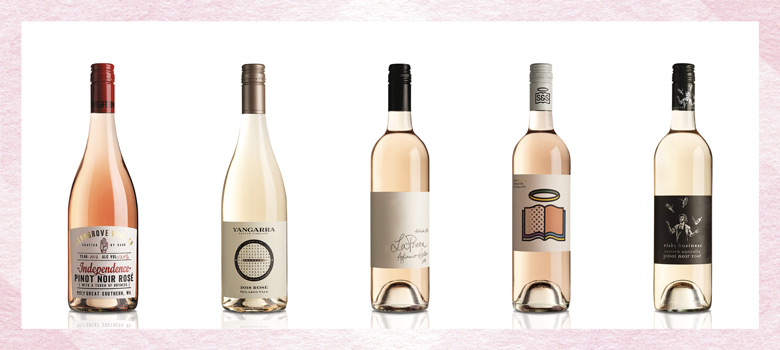
Ferngrove Wine Co Independence Pinot Noir Rosé 2018
Frankland River, RRP $24
With its cool nights, warm days and long sunlight hours, Frankland River is perfect for Pinot Noir. Made into a Rosé, it’s vibrant salmon pink in the glass with classic strawberries and cream aromas and a hint of lime leaf. Full of flavour with loads of vibrant red fruits, lemon and lime and mouth-watering acidity. Quite minerally with a savoury, white strawberry-like finish.
Yangarra Grenache Rosé 2018
McLaren Vale, RRP $25
By picking their bush vine Grenache early in the season, Yangarra aims to capture the pink lady apple crunchiness of the skins. The resulting Rosé is almost clear in the glass with a pale onion skin hue. The nose is also very restrained with hints of wet stone, herb and charcuterie. Very savoury, almost neutral in style, making this an excellent food wine in the style of some European Rosés. More about texture and mouthfeel rather than sweet fruit characters.
La Prova Aglianico Rosato 2018
Adelaide Hills, RRP $25
While Aglianico is a Greek variety, it is mostly grown in Italy. La Prova has some of a sprinkling of vines in Australia, but it looks set to take off, thanks to its full-bodied characters. As a Rosato (Italian for Rosé), it has a pale onion skin colour. Cranberry, pomegranate, dried herb and orange zest aromas lead to a juicy palate with a vibrant core of red fruit driven by fine tannins and bright, mouth-watering acidity through to a long, savoury finish.
Saint & Scholar Pinot Rosé 2019
Adelaide Hills, RRP $25
Another Pinot Noir standout from the Adelaide Hills – this time from the Saint (Stephen Dew) and the Scholar (Reid Bosward). It is a pale onion skin colour in the glass with attractive aromas of cranberry, pomegranate, dried herb and orange zest. A juicy wine with a vibrant core of red fruit characters, it is driven by fine tannins and bright, mouth-watering acidity through to a long, savoury finish.
Risky Business Pinot Noir Rosé 2019
Western Australia, RRP $25
Winner of a Trophy at the National Cool Climate Wine Show and a Gold medal at the 2018 Royal Adelaide Wine Show, this Western Australian Pinot Rosé is bright pale pink in colour with aromas of Turkish Delight, cranberry, raspberry, floral and white pepper perfume. Characterising the palate are punchy cherry and strawberry Pinot varietals in a light and dry frame with good depth and extension.
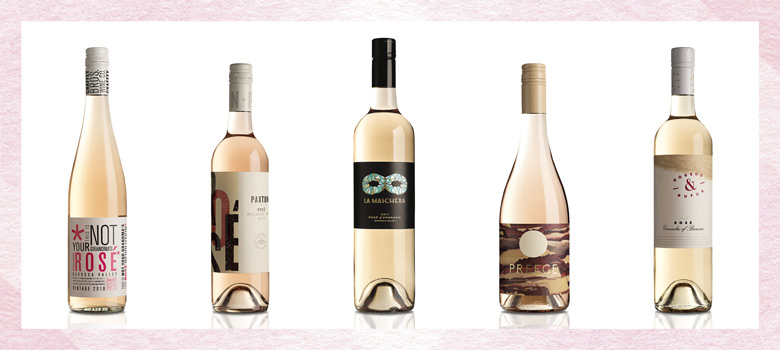
Chaffey Bros Not your Grandma’s Rosé 2018
Barossa Valley, RRP $22
A pale pink blend of Grenache and Mourvedre, both from old vines, as well as Riesling, Gewürtztraminer, and Weißer Herold. Cranberry, red cherry, watermelon, musk and dried herb aromas lead to a palate that’s light-bodied, almost ethereal yet with plenty of red fruit core depth, attractive spice notes, soft acidity and a clean finish. Well made with all-round appeal.
Paxton Rosé 2019
McLaren Vale, RRP $22
A blend of Shiraz and Grenache from an organic and biodynamic producer that uses a ‘smart farming’ program focussed on soil health and biodiversity. It’s promoted as the ‘perfect summer drinking wine’ and the Panel would agree. Bright pale salmon in the glass, it presents a nose exuding savoury five spice lift over cherry, watermelon and musk aromas. The palate is light and dry with crunchy red berry fruit, fresh, spicy acidity and savoury persistence.
La Maschera Rosé of Granaxia 2017
Barossa Valley, RRP $20
Pronounced ‘La Mas-kera’, this label is named after the masks revellers wear at Italy’s Carnival of Venice. This is a salmon pink coloured Rosé presenting dusty red berry aromas with confectionary and talc notes. Light-bodied yet sweetly fruited with generous cherry and strawberry characters and varietal confectionery. Fresh and floral with crisp, drying acidity.
Preece Grenache Rosé 2019
Nagambie, RRP $20
This wine is from a range that pays tribute to Mitchelton winery's highly decorated and founding winemaker, Colin Preece. One of the two Victorian inclusions, it’s bright pale salmon in the glass with fresh red and blue fruit perfume and light confectionery notes. The palate appeals with spicy blue fruit intensity along with herb and white pepper complexity, savoury acidity and a dry, delicate finish. Overall, a very attractive Rosé.
Rogers & Rufus Grenache
Rosé 2018
Barossa Valley, RRP $65
Rogers & Rufus describe themselves as ‘grown-up vignerons who never quite left their boyhood behind’ – they only make Rosé and this is their tenth vintage. It's a pale onion skin colour with aromas of raspberry, cranberry, cured meats and struck match. Very light-bodied yet with great depth showing as fine red berries with mouth-watering acidity and a spicy, lightly fruity finish.
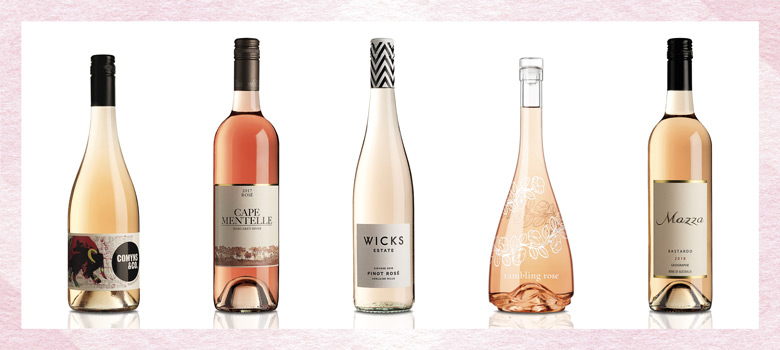
Comyns & Co Merlot Cabernet Franc Rosé 2018
Hunter Valley, RRP $28
This is an intriguing blend from Hunter Valley husband-and-wife team, Scott and Missy Comyns. Matching the vibrancy of the label, the colour is vibrant pale orange. It has a smokey, slightly nutty nose with red berry and spice lift. Shows an interesting mix of spice and dried herb characters softened by sweet plummy fruit leaving a deliciously savoury finish. Very focussed with well-judged acidity.
Cape Mentelle Rosé 2017
Margaret River, RRP $28
Predominately made from Shiraz, this Rosé also includes splashes of Grenache, Tempranillo and Sangiovese. It ranges from pale orange to pink in the glass, while sweet dark cherry and strawberry aromas with floral notes precede a palate showing crunchy red berry fruit flavours, peppery spice and dried herb complexity throughout. It features mouth-watering acidity leaving a super-dry and savoury impression.
Wicks Estate Pinot Rosé 2019
Adelaide Hills, RRP $20
Another great example of Rosé made from Pinot Noir fruit grown in the Adelaide Hills. Of course, having a winemaker of the calibre of Leigh Ratzmer doesn't hurt. A pale salmon pink colour, it has a nose full of beautiful rose water and musk aromas. The palate is light, bright and zesty in a dry and pristine style with light layers of cranberry and watermelon, crisp acidity and a mouth-watering finish. Very delicate and elegant.
Rambling Roses Rosé 2018
South Australia, RRP $22
This Rosé comes from Fourth Wave Wines and is said to be like a rambling rose in that it's delicate yet intensely flavoured and is made with minimal handling. Very pale orange to onion skin in the glass, it presents a savoury lift of dried red berries, dried herb and wet rock. Deliciously savoury with faintly smokey cherry, raspberry and cranberry with drying acidity offset by subtle confectionery notes on the finish.
Mazza Wines Bastardo Rosé 2018
Geographe, RRP $19
Anne and David Mazza specialise in growing Spanish and Portuguese varieties, with Bastardo being the latter. It's also known as Trousseau and is most famously used in Port. As a Rosé, it's bright pale salmon to copper in colour with a nose showing herbaceous notes over red and dark berries with hints of wood smoke. Bright yet juicy with subtle cherry-berry sweetness, velvety acidity and faint meaty notes featuring on the finish.